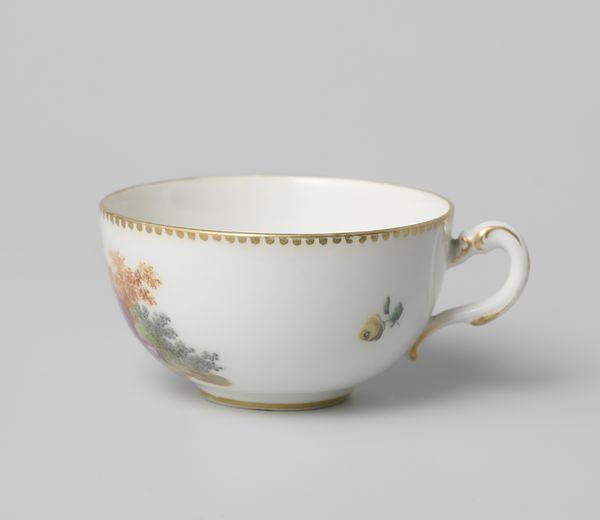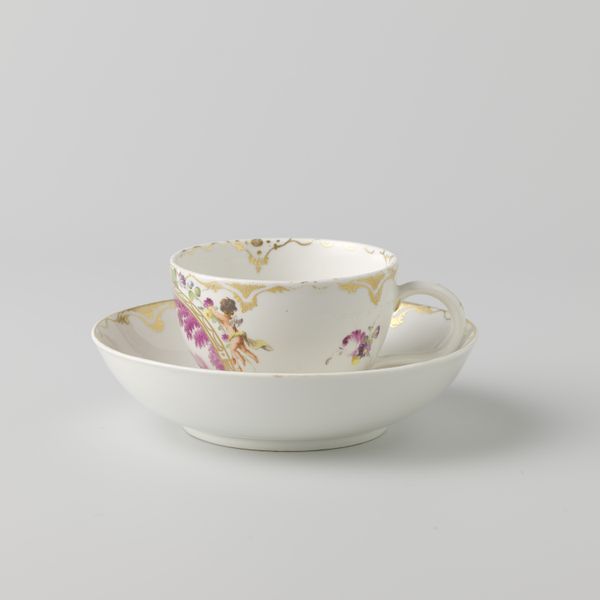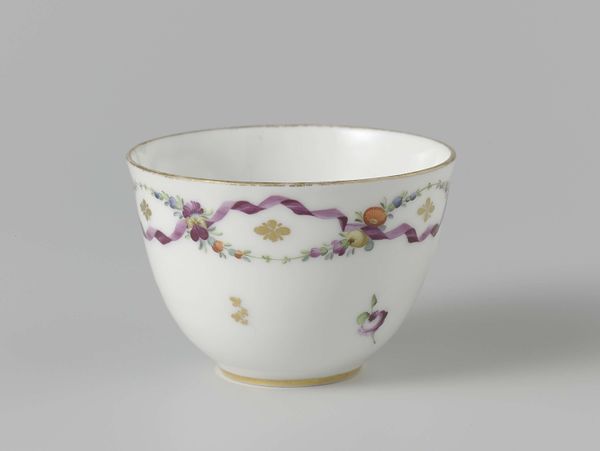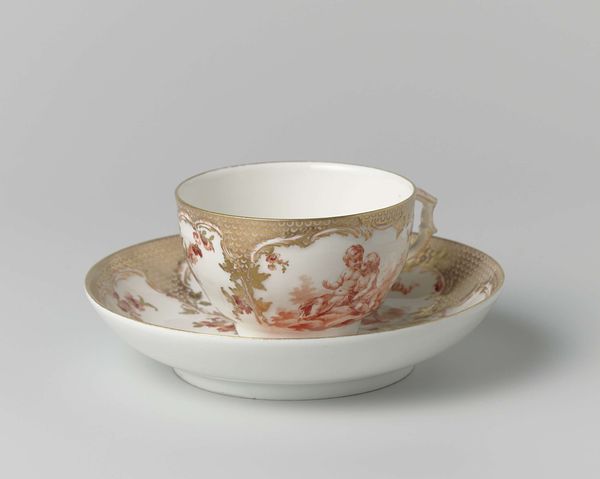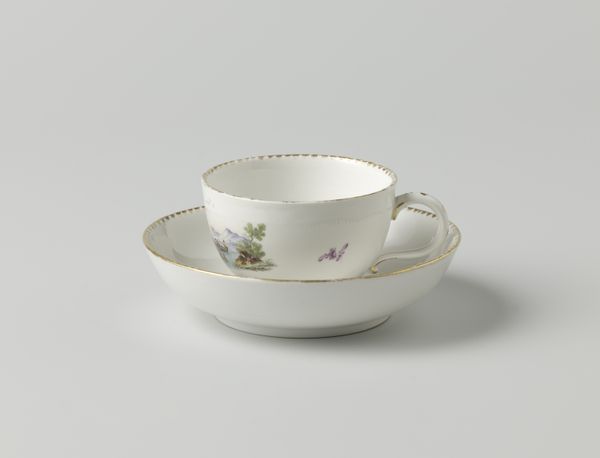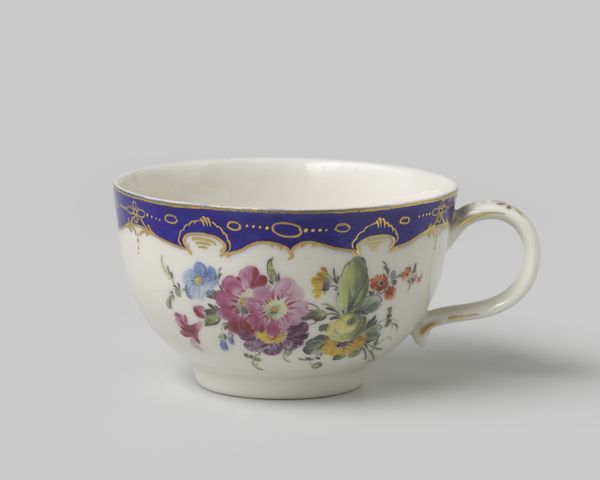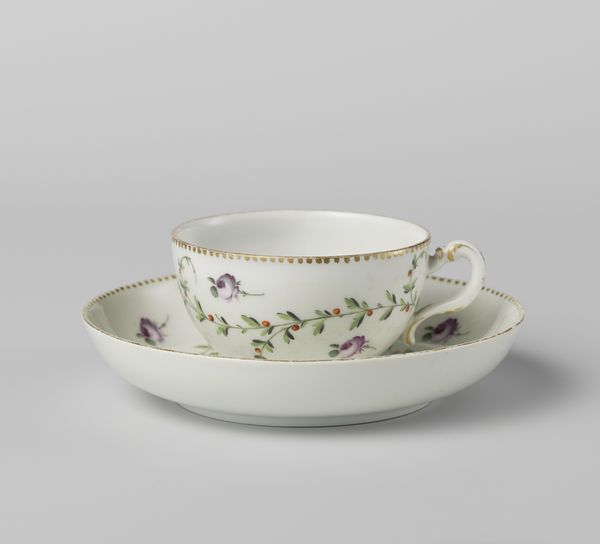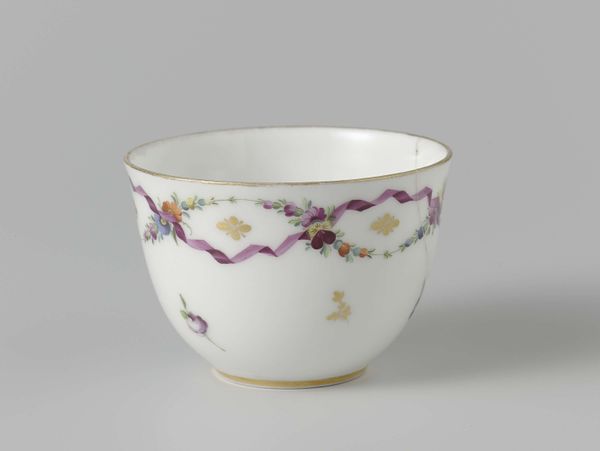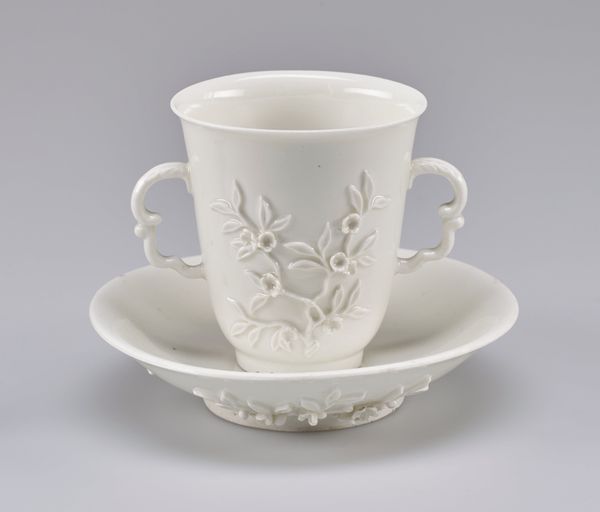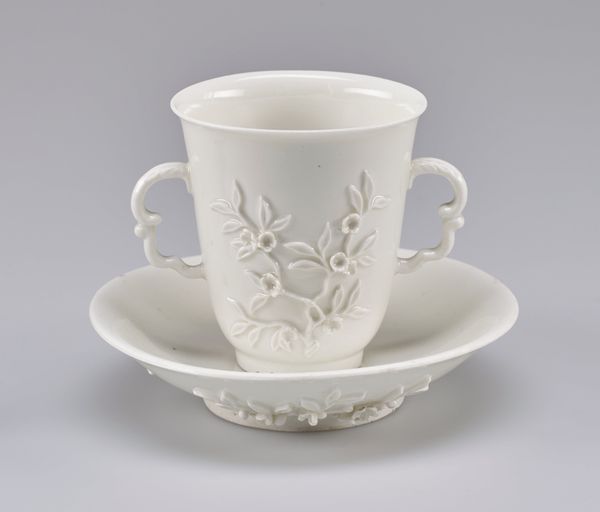
Dimensions: height 4.5 cm, diameter 7.6 cm, diameter 3.5 cm, width 9.1 cm
Copyright: Rijks Museum: Open Domain
Editor: We’re looking at a delightful earthenware cup made around 1750-1799 by Höchst, called "Cup with a castle." The first thing I notice is the playful juxtaposition of the refined castle scene with the everyday object of a teacup. It feels almost whimsical. What sort of story do you think it’s trying to tell? Curator: Whimsical is spot on! Imagine holding court with this cup, your pinky extended just so. For me, it whispers of hidden gardens, of powdered wigs and furtive glances exchanged over steaming cups of tea. Rococo loved these delightful contradictions - elevating the everyday to an art form, much like Instagram filters today, I suppose. What I love is how this landscape, almost swallowed by foliage, still implies human stories of a castle in the backdrop. What do you imagine those stories are? Editor: That’s a fascinating way to look at it. To me, the castle peeking through makes me imagine a fairytale. But how would this have been different than, say, artwork displayed on walls? Was the act of holding and using the artwork part of its original design? Curator: Exactly! A painting hangs, demanding observation. This cup? It invites interaction. The smooth curve against your lips, the warmth seeping into your hand, and then that sudden reveal – a tiny world blossoming before you. This isn't just viewing art; it's a sensory immersion, a tactile theatre. Do you find that idea of functionality changing art itself? Editor: Absolutely, viewing this piece has brought out the performative dimension to an artwork. I would've never noticed it without your help, it makes so much more sense in that context! Thanks so much for sharing! Curator: My pleasure!
Comments
No comments
Be the first to comment and join the conversation on the ultimate creative platform.

